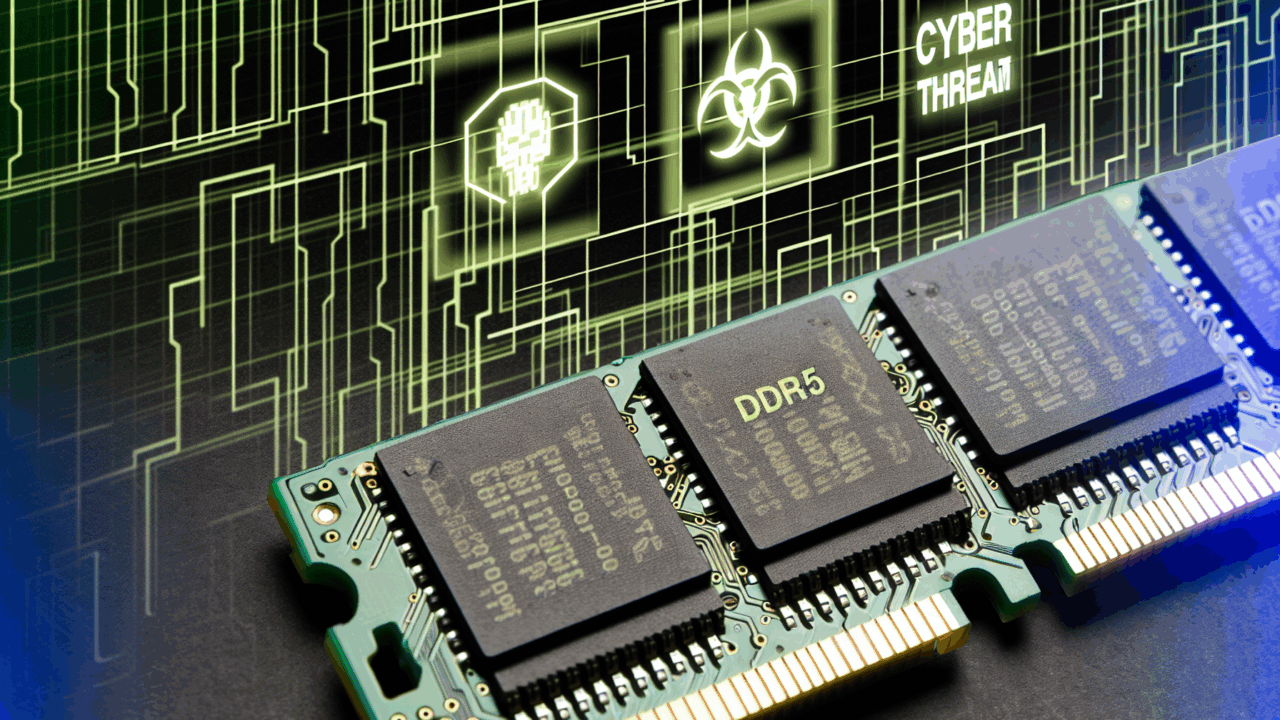A recent breakthrough by researchers has unveiled Phoenix, an alarming variant capable of circumventing DDR5 memory chip protections, posing significant concerns for cybersecurity experts.
- The Phoenix Attack leverages weaknesses in DDR5’s Target Row Refresh (TRR) mitigation, which was designed to address predecessor RowHammer flaws.
- By carefully analyzing the adaptive nature of TRR, researchers discovered timing patterns that allow controlled, rapid accesses to specific memory rows, evading the defensive refresh mechanisms.
- Phoenix introduces microarchitectural intelligence, a process that involves studying the memory chip’s response to controlled hammering sequences to deduce the underlying TRR policy.
- Once understood, the attack systematically exploits policy loopholes—essentially blinds spots where TRR’s efficacy diminishes, inducing bit flips in adjacent rows undetected.
- This method represents a significant escalation in RowHammer techniques, suggesting a continuous arms race between attackers and memory defenses.
DDR5 memory emerged with the promise of stronger defenses against RowHammer attacks, a hazardous exploit where repeated access to a memory row can cause bit flips in adjacent rows. DDR5 integrated several advanced protection mechanisms, among which included:
- Target Row Refresh (TRR): A feature that prevents a potential attacker from knowing exactly which rows get refreshed, thus mitigating RowHammer attacks through obfuscation.
- On-die Error Correcting Code (ECC): Automatically detects and corrects single-bit memory errors, making exploitation significantly more difficult for attackers.
- Adaptive Refresh Rates: DDR5 adapts refresh rates dynamically, potentially interrupting the rapid access pattern needed for RowHammer to be effective.
- Increased Bank Groups: By expanding the number of bank groups, DDR5 reduces the likelihood of adjacent row activation, effectively spreading out potential RowHammer targets.
These features combined to present an imposing barrier that hackers initially found resilient, shielding data from the once-feared RowHammer phenomenon.
- The Phoenix exploit represents a significant threat in the cybersecurity landscape, with a Common Vulnerability Scoring System (CVSS) base score that reflects its high severity due to the ease of execution, widespread effect, and the difficulty of mitigation.
- As an evolved RowHammer attack, Phoenix can potentially bypass current DDR5 memory defenses, undermining trust in existing security protocols and necessitating an industry-wide reassessment of hardware vulnerability.
- Data security implications are profound as the attack targets the fundamental integrity of system memory, leading to unauthorized access, data corruption, or even system hijacking, posing risks to personal, corporate, and national security interests.
- The disclosure of Phoenix necessitates immediate action from hardware manufacturers and cybersecurity professionals to devise robust defensive mechanisms, spurring potential advancements in intrusion detection systems and memory protection solutions.
- To mitigate emerging threats like the Phoenix RowHammer attack, the semiconductor industry should commit to continuous, proactive research, including collaboration with academic institutions renowned for their work in cybersecurity and hardware design.
- Implement tailored security frameworks for memory technologies during the design phase, utilizing a defense-in-depth approach that integrates hardware and firmware security measures.
- Increasing transparency and information sharing regarding vulnerabilities can expedite the development of security patches and foster community-wide resilience against new forms of attacks.
- Establishing regular memory testing protocols that challenge the hardware under developing attack scenarios can reveal potential weaknesses before they can be exploited in the wild.
- Encourage investment in advanced memory technologies that inherently resist RowHammer-style attacks through architectural innovations, thus future-proofing upcoming generations of memory hardware.
Conclusions
Phoenix challenges cybersecurity architecture, demonstrating that even advanced DDR5 memory chips are susceptible. Its detection underscores the ever-evolving nature of cyber threats and the need for continuous vigilance.
Source: https://thehackernews.com/2025/09/phoenix-rowhammer-attack-bypasses.html
